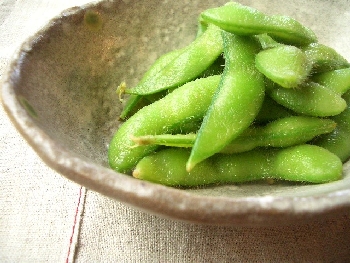Are Soy Isoflavones the next Nitric Oxide Boosters?
Are you familiar with nitric oxide? You see a great many supplement products now with names coined around the terms “nitric oxide” and its common abbreviation; “NO”. Nitric oxide is a highly desirable natural compound that promotes better circulation by inducing a natural process known as vasodilation. There are many reasons people may want to increase nitric oxide production and vasodilation; better blood pressure, improved erectile function and muscle fullness are the most common. In response, the supplement industry has created a whole category of supplements to promote vasodilation (” nitric oxide boosters”) most of which rely on, essentially, a single amino acid to get job done. A new study suggests that soy isoflavones are effective NO boosters, too, which could pave the way towards much more effective NO products.
Vasodilation is one of the most important ways the body regulates circulation. Vasodilation begins when endothelial cells that line blood vessels synthesize nitric oxide, which relaxes the smooth muscle layer deeper within the vessel wall. This allows the vessel to widen and open more fully. This in turn increases the volume of blood flow, which has many positive effects; blood pressure, overall circulation, muscular fullness, erectile function all benefit from increased NO synthesis and vasodilation. Vasodilation from increased NO synthesis also increase both the supply of oxygen and nutrients to tissues and the removal of blood-borne wastes like carbon dioxide and lactic acid.
So for many people, increasing NO production is desirable. This includes people with high blood pressure, bodybuilders looking for increased muscle fullness, mature men dealing with erectile difficulties, and even those with chronically cold hands and feet.
Since nitric oxide is produced primarily from the amino acid arginine, most NO-oriented products are formulated around various forms of arginine. Other ingredients may enhance the use of NO or prolong its activity but arginine is at the heart of every NO formula.
An interesting new study shows that the unlikeliest of ingredients – soy isoflavones – also increased NO synthesis in human endothelial cells. Soy isoflavones are already a popular type of supplement and formula ingredient, but they’re not often used by men. Instead, soy isoflavones – best known for beneficial hormone-balancing effects – are usually used by women for menopause support and bone health. This is almost the opposite of NO products, most of which are used by men. Regardless of gender, increasing NO synthesis has a wide-range of applications that – besides bodybuilding and ED-concerns – include serious and common health problems like hypertension and stroke risk management. So there’s enormous market potential for soy isoflavones or any other natural substance that shows robust NO-enhancing effects. As future studies clarify a dose-effect relationship, we can expect to see soy isoflavones enjoy a surge in popularity as they find their way into the next-generation of NO-boosters.




